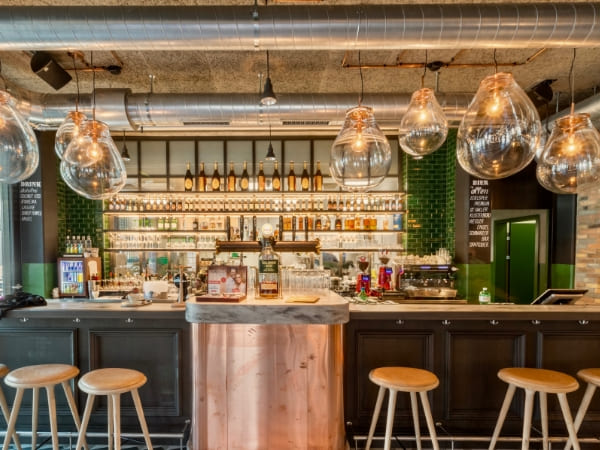Super Early Bird Deadline
October 31, 2025
Judging
Date
May 18, 2026
Winners
Announced
June 10, 2026

You’ll never optimize the revenue opportunity without getting the basics right: starting by knowing who your clients are, what they like, and what they’re prepared to pay: creating a program that meets their expectations through offering quality and value.
Before talking about driving more revenue in any wine-by-the-glass program it’s important to get the basics right. Perhaps counter-intuitively, actually reducing customer choice and listing fewer wines – a mix of between 12 and no more than 20 (varietals / price points / reds / whites / rosés) would be considered adequate in most establishments – and, as we’ll cover in this piece, is likely both to please your customers, as well and being a stronger revenue-driver.
Working with your suppliers, tasting every wine will not only help you refine your by-the-glass list, but can mean that you’re not driven solely by cost-of-purchase considerations: it’s quite possible that you could find a wine that costs you $2 less a bottle, but tastes as good as a wine at a higher price point, providing a win-win through better value both for you and your customers, whilst increasing your margin potential.
The first guiding principle in constructing any wine list and maximizing your return on investment is to recognize that the list is not for you.
In putting together a wines-by-the-glass program you also need to ensure you maintain customer value perceptions across price points – sometimes called price reasonableness – and wines should only be included if the level of wine sales is able to be justified by your type of establishment and the clientele you serve (it’s no good in tying up capital in goods that either don’t sell or where you have to compromise on margins to shift).
Knowing your core customer base is the be-all and end-all of a successful commercial enterprise: this, and knowing the likely volume throughput, will also allow you to negotiate with your suppliers from a position of strength in order to strike the best deals and maximise your margin potential.
The second guiding principle is to ensure that each and every glass you serve is as fresh as possible and best reflects the characteristics of the wine itself and fully meets guest (price/value/venue) expectations. There are myriad commercially-available systems on the market to ensure that opened bottles can be stored properly to ensure this: and any investment required will be more than compensated by avoiding a poor guest experience, likely remembered as poor quality service, which can be hugely financially damaging for your whole business. When customers see that you truly care about your wines-by-the-glass program, they are more likely to return, recommend your restaurant, bar, club or hotel to others (and even give you a great review online).

1: Prominent Positioning: whilst we read from left to right, research would suggest that, when scanning a menu, it’s the upper right-hand corner that the eyes focus on. This means that if you have (a) particular wine(s) you want to promote – wines with higher margins, for example – it’s useful to know that this ‘sweet spot’ can be an effective sales tool. Using boxes or frames are other ways to highlight wines to increase sales rates, always provided they’re not overdone, and so become confusing and counter-productive,
2: Point Of Sale: tent cards are an inexpensive marketing strategy that can nevertheless be highly profitable, with research showing increased sales rates of as much as 50%. However, research also shows that seven wines are the limit you can include before guests can become overwhelmed by choice and so, paradoxically, revert to a wine they’ve chosen before – or, in a worst-case scenario, make no choice at all!
3: Detailed Descriptions: a detailed description of a wine – its brand name, grape varietals(s), country and region, flavours, aromas and taste – can help make a customer more familiar and comfortable when it comes to making a selection and therefore to try a wine, with good descriptions leading to increased customer satisfaction and higher sales rates.
4: Staff Education: your staff are a real tool in helping any drive for more revenue, but to gain maximum benefit from this you need to provide them with proper training. This ought to include supervised tastings to inform and educate them on the wines they’re handling, including upselling opportunities. Upselling can also include moving the sales opportunity from wines-by-the-glass to full bottles, itself a great revenue-driver (the conversation might go: “if you like this wine, we have something I think you’ll like even more, which is available by the bottle”). It’s a good idea to produce a daily staff sheet that details each wine during mandatory pre-shift meetings, including covering wine pairing choices that best complement menu specials. In this way, your staff will also better understand and appreciate their role in making every guest experience an exceptional one, with a good wine recommendation playing its rightful part.
5: Working With Your Kitchen: in a restaurant situation, you cannot expect every customer to know which wine goes best with their food choice. It may be that they feel uncomfortable in even asking for advice and end up skipping making a wine choice altogether, so it makes sound commercial sense to place the wines you sell by the glass beside food items that they complement. The seasonal availability of ingredients is likely to have a direct bearing on your by-the-glass program and ringing the changes to closely reflect changing menu choices will bear directly on how successful your program remains. ‘Making do’ is unlikely to be a good business decision and you don’t want to lose your customers’ trust with the negative effect this can have on your business as a whole.
6: Happy Hours / Discounted Prices: what’s not to like? Running happy hours to attract customers and promote your wine by the glass program represents another win-win, as are discounted prices during any slower days of the week (most establishments experience varying volumes depending on a whole number of circumstances outside their direct control). Driving new trial, frequency, average spend and party size means that, although you’re selling at a lower price, the higher sales volumes can more than compensate for the discounted prices, whilst creating more opportunities for customers to experience your venue’s brand values to future business advantage.
7: Incentivize Your Guests: providing your customers with sufficient incentive to complete a review of your wines-by-the-glass offer. This can be operated via a form on the company’s website (or – and why not – a post-paid card system) with wine and food-related rewards for published quotes. This needs to be structured so you can use this to promote the fact that you’re serious about your wine choices, including your wines-by-the-glass offer, and for management to value it for what it is: a business-building, margin-retaining, revenue-increasing, sales and marketing drive.

The article is contributed by Alistair Morrell, Wine Inspector, wine industry consultant, journalist and, commentator. Over 30 years as a wine business professional, Alistair shares his global knowledge, network, and experience of growers, importers, distributors and buyers.
Enter your Wines now and get in front of top Sommeliers, Wine Directors, and On-Premise Wine Buyers of USA.
